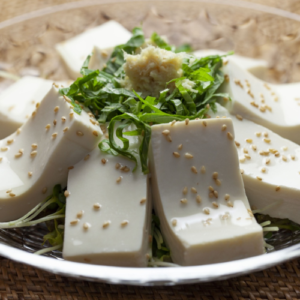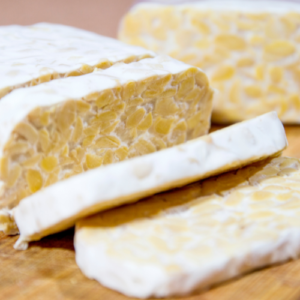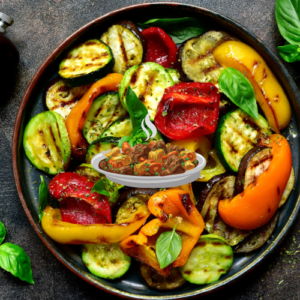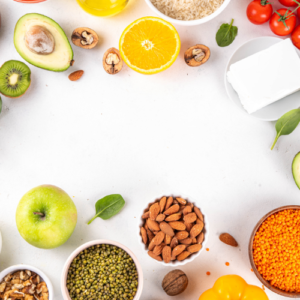**Introduction:**
Low fiber vegan diets consist of plant-based foods that are lower in dietary fiber.
People usually praise fiber for helping with digestion and general health, but some people may have bad reactions to high-fiber foods.
Fiber restriction is often needed to ease symptoms like bloating, gas, and stomach pain in people with IBS, Crohn’s disease, and diverticulitis.
**Understanding a Low Fiber Vegan Diet:**
A low fiber vegan diet is centered around plant-based foods that are lower in dietary fiber content.
While traditional vegan diets emphasize high-fiber whole foods for their numerous health benefits, such as improved digestion and reduced risk of chronic diseases, a low fiber approach may be necessary for individuals with certain gastrointestinal conditions like Crohn’s disease, diverticulitis, or irritable bowel syndrome (IBS).

Additionally, some individuals may find high-fiber foods difficult to digest or may require a temporary reduction in fiber intake during specific phases of medical treatment.
Foods to eat on a low fiber vegan diet
- Tofu: Tofu is a versatile protein source that can be used in various dishes such as stir-fries, soups, and salads.

- Tempeh: Similar to tofu, tempeh is another excellent source of plant-based protein that can be incorporated into a variety of recipe.

- Cooked vegetables: Opt for well-cooked or peeled vegetables such as carrots, squash, potatoes (without skin), zucchini, and green beans. These are easier to digest compared to raw or high-fiber vegetables.

- Canned or cooked fruits: Choose canned fruits without skins or seeds, or cook fruits to soften them. Examples include applesauce, peeled and stewed apples, and canned peaches or pears in juice.

- White rice: White rice is lower in fiber compared to brown rice and can be a good source of carbohydrates for energy.
- White pasta: Choose refined pasta made from white flour instead of whole wheat pasta to reduce fiber intake.
- Refined grains: Include foods like white bread, crackers, and cereals made from refined grains rather than whole grains.
- Nut butters: Peanut butter, almond butter, or other nut butters can be spread on toast or used in smoothies for added protein and healthy fats.
- Plant-based milks: Opt for fortified varieties of almond milk, rice milk, or oat milk, which are typically lower in fiber compared to whole nuts or grains.
- Smoothies: Blend together fruits like bananas, berries, and peeled kiwi with plant-based milk and a scoop of protein powder for a nutritious and easily digestible meal or snack.
- Seitan: Seitan, also known as wheat gluten, is a high-protein meat substitute that can be used in place of tofu or tempeh in recipes.
- Dairy-free yogurt: Choose dairy-free yogurts made from coconut milk or almond milk, which tend to be lower in fiber compared to soy-based yogurts.
- Plant-based protein powders: Incorporate protein powders made from pea protein, rice protein, or hemp protein into smoothies or baked goods for an extra boost of protein.
- Cooked legumes: While legumes are typically high in fiber, cooking them thoroughly and removing the skins can reduce their fiber content. Examples include lentils, split peas, and peeled chickpeas.
- Oils and fats: Use plant-based oils like olive oil or coconut oil for cooking and dressing salads to add healthy fats to your diet.
**Benefits of a Low Fiber Vegan Diet:**
1. **Gentler on the Digestive System:** For those with digestive issues, a low fiber vegan diet can help alleviate symptoms like bloating, gas, and abdominal discomfort by reducing the workload on the digestive system.
2. **Management of Gastrointestinal Conditions:** Individuals with conditions such as Crohn’s disease or diverticulitis may find symptom relief and better disease management with a low fiber approach, as it minimizes irritation to the intestinal lining and reduces the risk of flare-ups.

3. **Increased Nutrient Absorption:** In some cases, a lower fiber intake can enhance nutrient absorption by slowing down the transit time of food through the digestive tract, allowing for more thorough absorption of essential nutrients.
**Considerations and Potential Drawbacks:**
1. **Risk of Nutrient Deficiencies:** While a well-planned low fiber vegan diet can be nutritionally adequate, there is a risk of missing out on certain nutrients typically abundant in high-fiber plant foods, such as vitamins, minerals, and phytonutrients.
Careful attention must be paid to include a diverse array of nutrient-dense foods to mitigate this risk.2. **Long-Term Health Implications:** While a low fiber approach may be beneficial for managing specific health conditions in the short term, it’s essential to consider the long-term implications on overall health and disease risk. Striking a balance between symptom management and nutritional adequacy is crucial.
3. **Impact on Gut Microbiota:** Dietary fiber plays a vital role in promoting a healthy gut microbiota by serving as fuel for beneficial gut bacteria.
A prolonged low fiber intake may disrupt the balance of gut flora, potentially impacting digestive health and immune function.
**Navigating a Low Fiber Vegan Diet:**
1. **Consultation with a Registered Dietitian:** Individuals considering or transitioning to a low fiber vegan food should seek guidance from a registered dietitian with expertise in plant-based nutrition.

A dietitian can help tailor the diet to meet individual nutritional needs while ensuring adequate nutrient intake.
2. **Focus on Nutrient-Dense Foods:** Emphasize nutrient-dense plant foods such as tofu, tempeh, legumes, nuts, seeds, non-fibrous vegetables (e.g., potatoes, carrots), and fortified plant-based products to maintain nutritional balance.
3. **Gradual Transition:** Transitioning to a low fiber vegan diet should be done gradually to allow the digestive system to adapt.
Sudden changes in fiber intake can exacerbate digestive symptoms in sensitive individuals.
Recipes for a Low Fiber Vegan Diet:
- Creamy Potato Soup: Combine diced potatoes, vegetable broth, onions, and garlic in a pot. Simmer until the potatoes are tender, then blend until smooth. Finish with a splash of plant-based milk for creaminess.
- Gentle Green Smoothie: Blend spinach, cucumber, banana, and a splash of coconut water for a refreshing and easily digestible smoothie option.
- Tofu Scramble: Sauté crumbled tofu with bell peppers, mushrooms, and turmeric for a protein-packed and fiber-light breakfast alternative.
- Simple Lentil Dal: Cook red lentils with spices like cumin, coriander, and ginger for a nourishing and easy-to-digest meal served over rice or quinoa.
- Soft-Baked Sweet Potatoes: Roast sweet potatoes until tender, then top with a dollop of vegan yogurt and a sprinkle of cinnamon for a comforting and nutritious side dish.
**Conclusion:**
A low fiber vegan diet can be a valuable tool for managing certain health conditions and improving digestive comfort in some individuals.
However, it’s essential to approach this dietary approach with careful consideration, ensuring nutritional adequacy and long-term health sustainability.
By working closely with healthcare professionals and incorporating nutrient-dense plant foods, individuals can successfully navigate a low fiber vegan food while reaping its potential benefits.